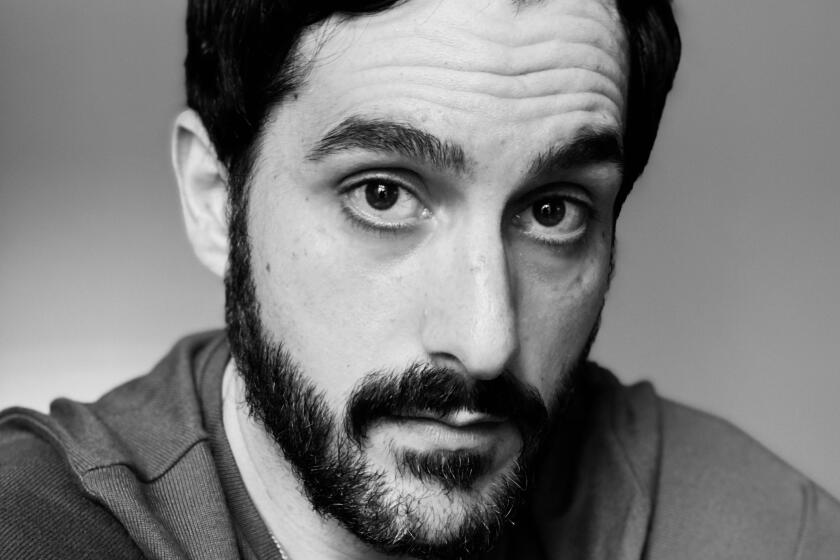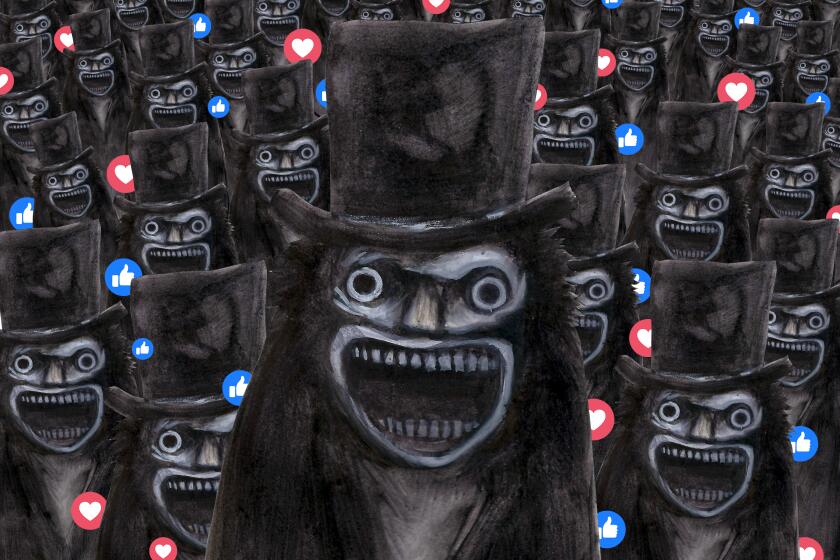We love to torture
WHEN PRESIDENT Bush sought to establish new guidelines on torture this fall, he claimed that any interrogation technique that shocks the conscience would not be allowed. Hollywood filmmakers, always eager to oppose the president, go the other way in a year-end glut of torture movies that display only techniques designed to shock the conscience.
From mainstream actioners such as “Casino Royale” and “Apocalypto” to horror cut-em-ups such as “Saw III” and “Turistas” (itself a retread of 2005’s breakout torture hit “Hostel”), the kind of entertainment referred to as “torture porn” combines the mise-en-scene of Abu Ghraib with screenwriting evocative of reports from Camp X-Ray.
In reviewing the torture hits, critics take pains to tell readers that these movies are somehow about our collective fears of confinement and mutilation, about confronting some kind of ultimate evil that kicks us in the crotch before it cuts off our head and sends it tumbling down the stairs, punishing us for our desires.
But if we’re confronting our fears, we’re sure doing it exuberantly. The ingeniously imagineered punishment devices in these movies, along with their chummy torture-chamber repartee and quick recoveries from pain and abuse, aren’t so much about the fear of torture as they are about the joy of it -- and its necessity. Torture is a duty that filmmakers, like Tom Sawyer painting the fence, have convinced us is a lot of fun.
And like Tom, they’ve managed to fob the dirty work off on somebody else. In the real world of Guantanamo and secret prisons, the news is about people from other countries being tortured by people from this one. But in the movies it’s the other way around.
The victims tend to be First World dum-dums tortured by Third World thugs, as in the Brazil-set “Turistas,” in which a grab bag of English speakers from the U.S., Britain and Australia are tortured by people who speak Portuguese -- except when they deliver helpful lectures in English on fair trade.
The new James Bond, we’re told, is a secret agent for today, a serious time in which the stakes are high. And, like the kids in “Turistas,” he’s tortured by a foreigner. So why does the torture in “Casino Royale” play like one of those frat pranks Rush Limbaugh referred to when he defended Abu Ghraib guards? Reviews of “Casino Royale” shared a certain glee over the phrase “genital torture”; critics couldn’t wait to titter over it. And as Bond and Le Chiffre trade quips about itches that need scratching, they might as well be snapping towels at each other in a locker room.
“Saw III,” on the other hand, functions more like a game show. It’s so close to “Deal or No Deal” that Howie Mandel should play its villain, who offers his victims a chance to better themselves even as they’re being tortured and killed. The message is explicit: Torture is a form of therapy that’s good for its victims, who deserve -- even need -- it.
It’s only Mel Gibson, our official madman, who is held to Amnesty International standards. While the torture in “Casino Royale” is applauded as bravura, Gibson’s kitschy “No Fear” version of Mayan history is described by critics as a crime against humanity. That’s because for Gibson torture is deeply serious, which is not to say he’s against it. While “Apocalypto” comes encoded with a message about the war in Iraq, mostly it exults in the bloodshed of sacrifice and defeat. James Wan and Leigh Wannell, the auteurs behind the “Saw” franchise, throw in phony moralizing as a kind of leavening to the carnival atmosphere of their films. But Gibson proves Samuel Johnson’s aphorism that no man is a hypocrite in his pleasures. For Gibson, torture isn’t the path to transcendence; it is transcendence.
In the age of Abu Ghraib, the unashamed passion of torture-genre groupies is mainstream and normal. Aintitcool.com commentator “funnyhat,” writing about “See No Evil,” a torture entry from last summer, is confused by anti-torture opprobrium. “Why does everyone call it ‘torture porn’?” funnyhat asks. “It’s entertainment, not a fetish! ‘See No Evil,’ while not the greatest movie, was a great step forward for horror fans who love our torture.”
“I love to torture!” Bela Lugosi shouted in a quaint (like the Geneva Convention) 1935 chiller called “The Raven.” “I tear torture from myself in torturing you,” Lugosi added, showing a level of insight denied current films, whose best critic could be Limbaugh. “You ever heard of emotional release? I’m talking about people having a good time,” Limbaugh said of the Abu Ghraib pranksters in 2004.
That’s a definition of torture to stand next to Bush’s. Here’s another: Torture is what we watch acted-out in front of us as we sit in movie theaters eating nachos. Torture is serial and endless, like entertainment, and comes to us in the guise of fun, as it did at Abu Ghraib. The two are beginning to merge.
A.S. HAMRAH is a writer and brand analyst living in Brooklyn.
More to Read
Only good movies
Get the Indie Focus newsletter, Mark Olsen's weekly guide to the world of cinema.
You may occasionally receive promotional content from the Los Angeles Times.










